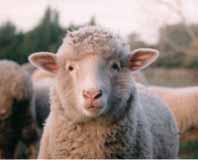Read the latest information on
Foot-and-mouth disease
 Vital sheep disease information collected through the National Sheep Health Monitoring Project (NSHMP) is now being integrated into Meat & Livestock Australia’s (MLA) Livestock Data Link (LDL), giving sheep producers easy access to information that can help save production losses.
Vital sheep disease information collected through the National Sheep Health Monitoring Project (NSHMP) is now being integrated into Meat & Livestock Australia’s (MLA) Livestock Data Link (LDL), giving sheep producers easy access to information that can help save production losses.
LDL provides producers and processing plants with reports into carcase quality as well as information on conditions affecting the quality of their product and, by extension, their profits.
The NSHMP has been monitoring sheep carcases in more than a dozen abattoirs nationwide since 2007, in order to tackle health and welfare conditions which can affect profits throughout the supply chain, through lost productivity and processing waste.
Providing this vital data to producers through LDL shows producers which health conditions have impacted their sheep, so they can avoid those conditions in the future through management and preventative treatments.
Dr Rob Barwell, Animal Health Australia’s Acting Executive Manager, Biosecurity and Product Integrity Services, explained the significant cost of the 16 diseases and conditions monitored by NSHMP.
“The industry loses nearly $120 million to these conditions each year,” said Dr Barwell. “Three quarters of that is lost by meat and wool producers.”
The data will link producers to information on how to tackle conditions found in their sheep during NSHMP inspection. Currently producers can access the past 15 months of data through LDL, with new data appearing within a short time of its collection.
In addition to what’s provided by LDL, producers can access vital information about protecting their sheep against a wide range of conditions on the Farm Biosecurity website.